Authors:
ABSTRACT
Aim
to evaluate the effects of rapid maxillary expansion (RME) in a group of OSAS preschool children.
Methods
Lateral cephalograms of 15 OSAS children (8 boys and 7 girls, age meanSD:
5.941.64 years) were analysed at the start of treatment with RME (T0). All subjects were revaluated after a mean
period of 1.570.58 years (T1). At this time the sample was divided into 2 groups according to the change in the
respiratory disturbance index (RDI): an improved group (I: 8 subjects) and a stationary/worsened group (SW: 7 subjects).
Differences between I and SW children with respect to values of cephalometric variables at T0 and to variations between T0
and T1 were evaluated using Mann-Whitney U test. Differences between T0 and T1 values in the overall group of children
and separately in I and SW groups were assessed using Wilcoxon test.
Results
At the start of treatment, the I group was
characterised by more retrognathic jaws with lower values of SNA (p0.055) and SNB (p0.020) and higher age
values (p0.093) when compared to SW group. After treatment, the I group showed an increase in SNA and SNB angle
significantly higher than SW group (p0.004 and p0.003, respectively). On the contrary, I and SW groups did
not differ as for variation in the skeletal divergency and in the total facial height.
Conclusion
OSAS preschool children
with retrognathic jaws could benefit from RME treatment.
PLUMX METRICS
Publication date:
Keywords:
Issue:
Vol.13 – n.1/2012
Page:
Publisher:
Cite:
Harvard: A. Marino, R. Ranieri, F. Chiarotti, M. P. Villa, C. Malagola (2012) "Rapid maxillary expansion in children with Obstructive Sleep Apnoea Syndrome (OSAS)", European Journal of Paediatric Dentistry, 13(1), pp57-63. doi:
Copyright (c) 2021 Ariesdue

This work is licensed under a Creative Commons Attribution-NonCommercial 4.0 International License.
